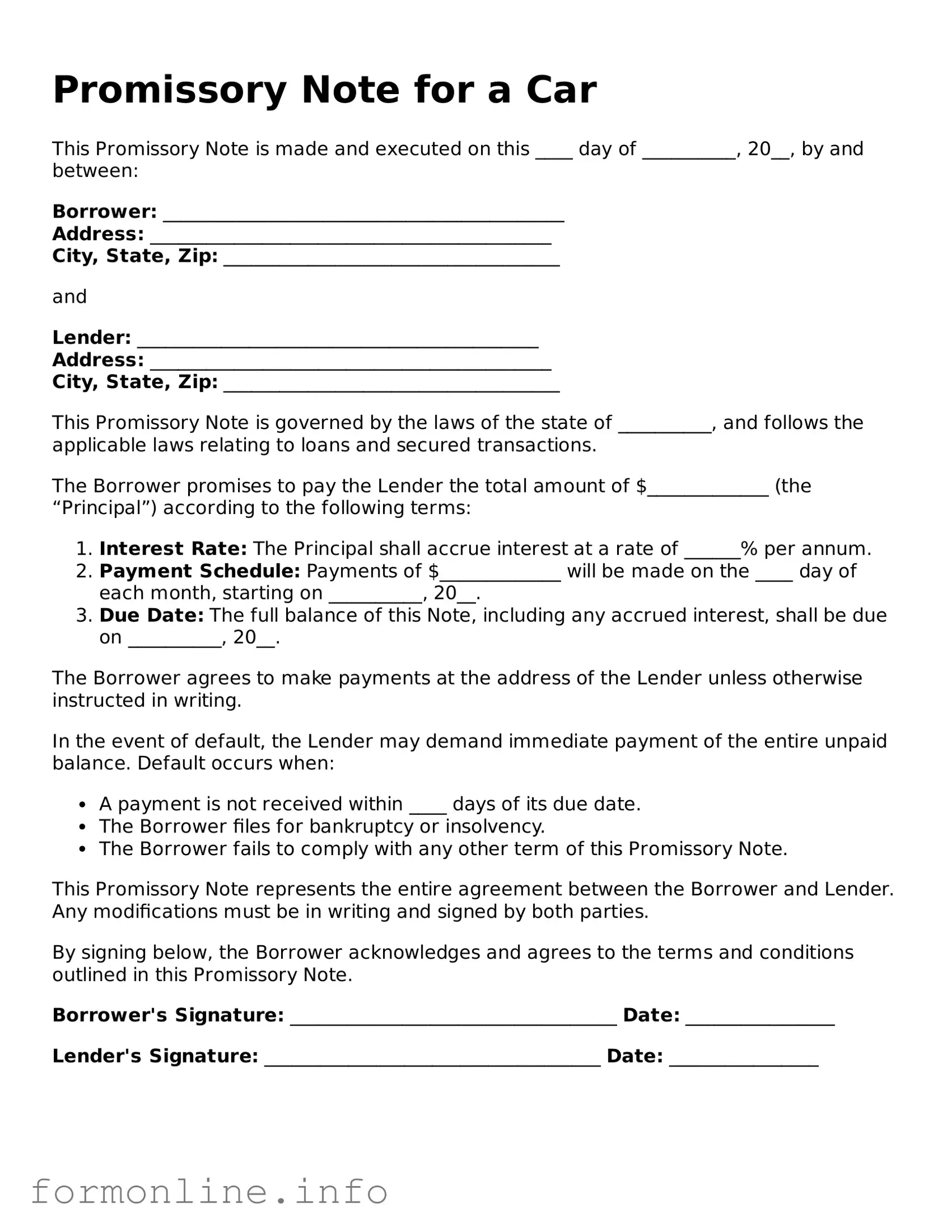Promissory Note for a Car
This Promissory Note is made and executed on this ____ day of __________, 20__, by and between:
Borrower: ___________________________________________
Address: ___________________________________________
City, State, Zip: ____________________________________
and
Lender: ___________________________________________
Address: ___________________________________________
City, State, Zip: ____________________________________
This Promissory Note is governed by the laws of the state of __________, and follows the applicable laws relating to loans and secured transactions.
The Borrower promises to pay the Lender the total amount of $_____________ (the “Principal”) according to the following terms:
- Interest Rate: The Principal shall accrue interest at a rate of ______% per annum.
- Payment Schedule: Payments of $_____________ will be made on the ____ day of each month, starting on __________, 20__.
- Due Date: The full balance of this Note, including any accrued interest, shall be due on __________, 20__.
The Borrower agrees to make payments at the address of the Lender unless otherwise instructed in writing.
In the event of default, the Lender may demand immediate payment of the entire unpaid balance. Default occurs when:
- A payment is not received within ____ days of its due date.
- The Borrower files for bankruptcy or insolvency.
- The Borrower fails to comply with any other term of this Promissory Note.
This Promissory Note represents the entire agreement between the Borrower and Lender. Any modifications must be in writing and signed by both parties.
By signing below, the Borrower acknowledges and agrees to the terms and conditions outlined in this Promissory Note.
Borrower's Signature: ___________________________________ Date: ________________
Lender's Signature: ____________________________________ Date: ________________
